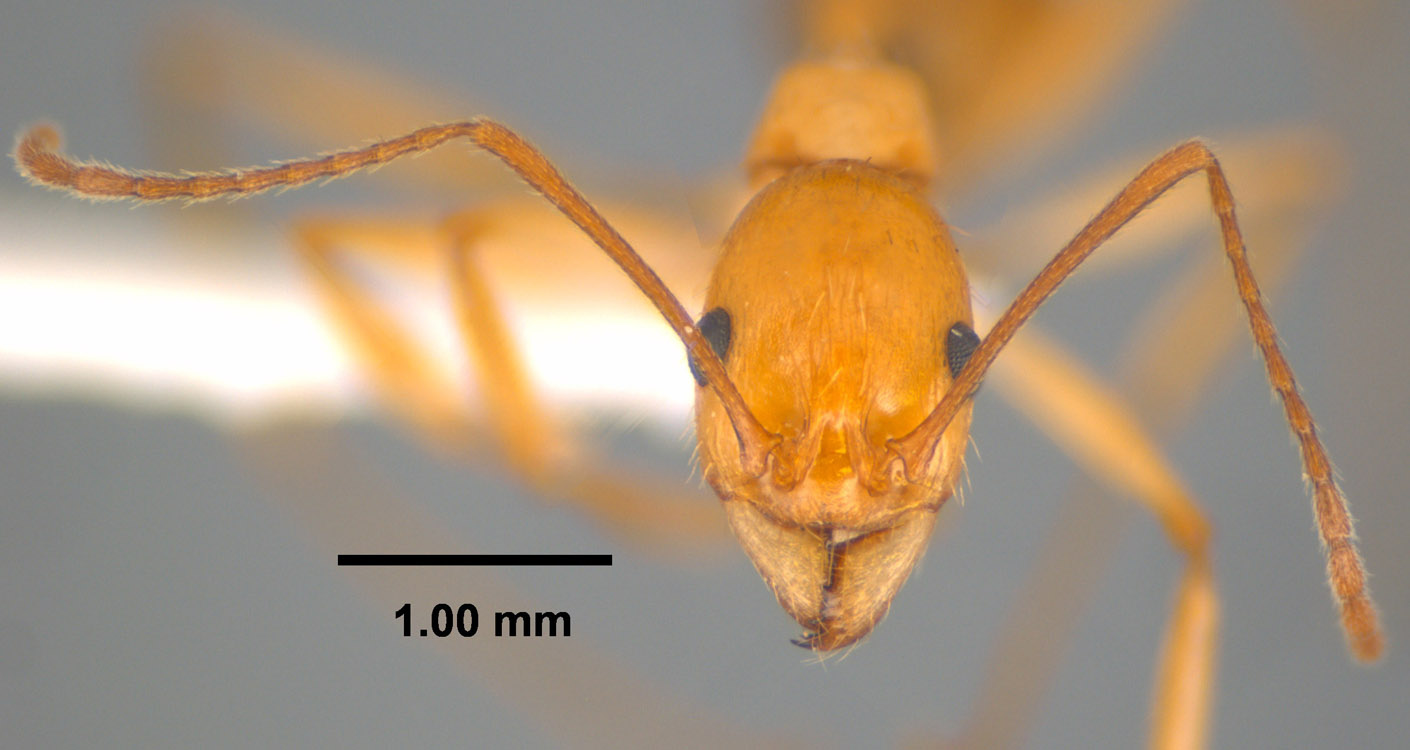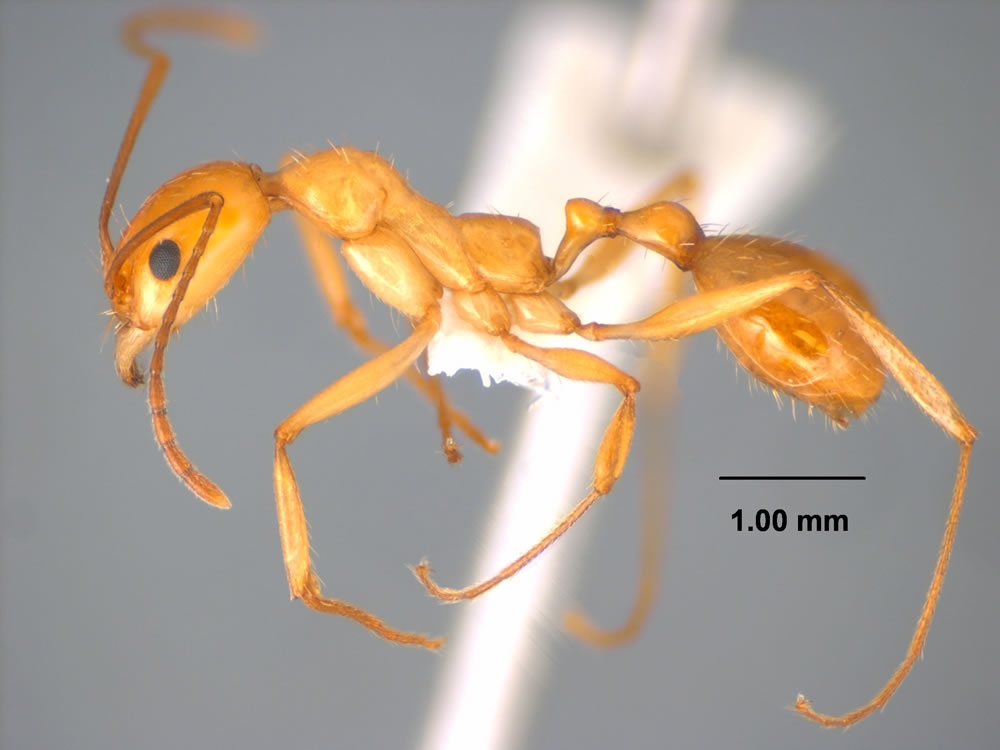Introduction
Ants in the genus Aphaenogaster are medium sized to large, slender with long legs and antennae, usually have propodeal spines (a few species lack spines), have 12 segmented antennae with the last 4 segments forming a weak club. The genus is widespread in North America and species nest in rotting wood, under bark, and in soil.
Identification
Aphaenogaster floridana is a yellowish-brown to orangish-brown species that has little sculpture on the body and lacks propodeal spines. This is the only southeastern (US) species of Aphaenogaster lacking spines (see photo above), and therefore it is easily identifiable. Some variation occurs in this species, and some populations are darker, more reddish-brown, and sometimes with more sculpture.
Biology and Economic Importance
Aphaenogaster floridana nests in small colonies in areas of deep sand. Colonies are difficult to spot as they typically lack any sort of mound, with only a tiny hole in the ground marking the entrance to their subterranean world. I have made various attempts at excavating colonies up to depths of almost a meter, without having found the primary portions of the colonies. It is therefore likely that this species nests quite deeply. Additionally, this species seems to be quite shy, but workers may be lured out with various baits, such as bits of cookie, cheese, etc.
Although this species has the potential to sting, it is unlikely to pose any serious threat due to its non-aggressive behavior. Furthermore, because it is restricted to habitats with deep sand, it is unlikely to be a nuisance pest in urban areas.
Distribution
In the Southeast, this species is known to occur in AL, FL, GA, MS, NC, SC. This species has been found in MS nesting in sand in a longleaf pine savanna, and is likely found in similar habitats along the Gulf Coast. It is common at inland, riverine sand dune sites in Georgia.
Literature Cited
Links
AntWeb Images
Discover Life Images






